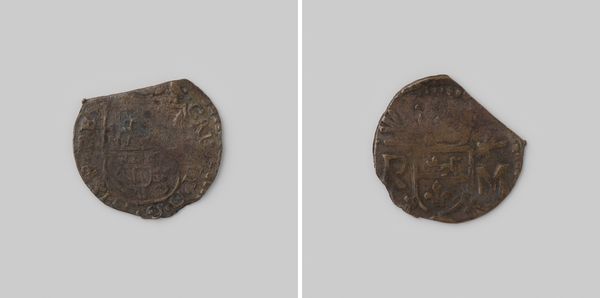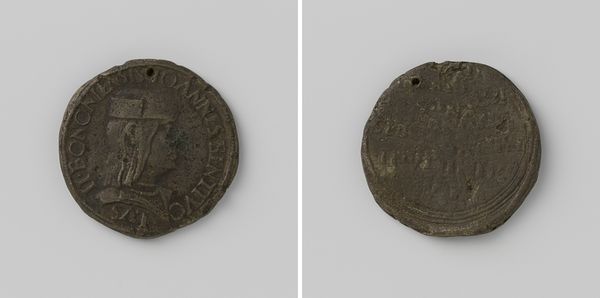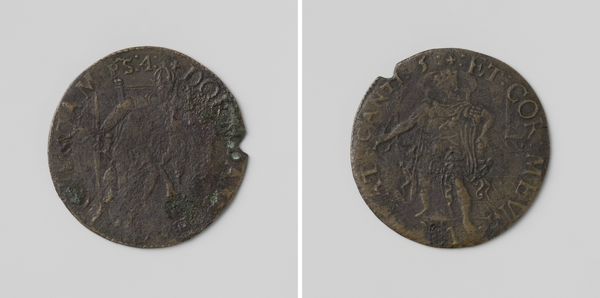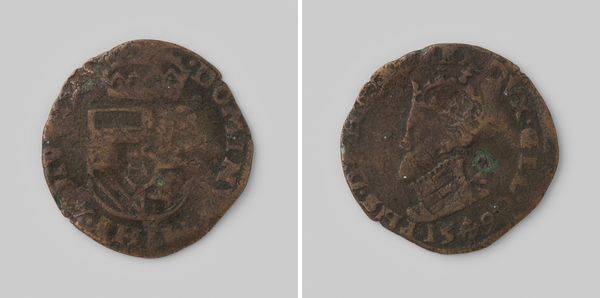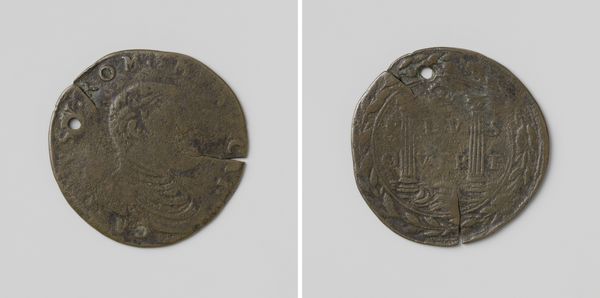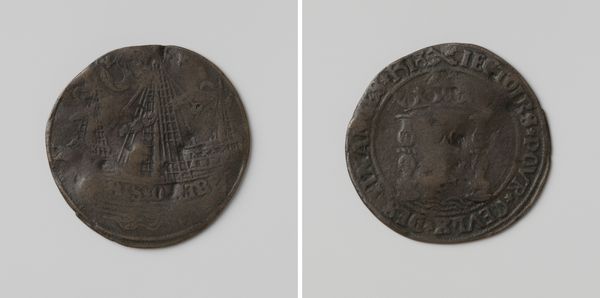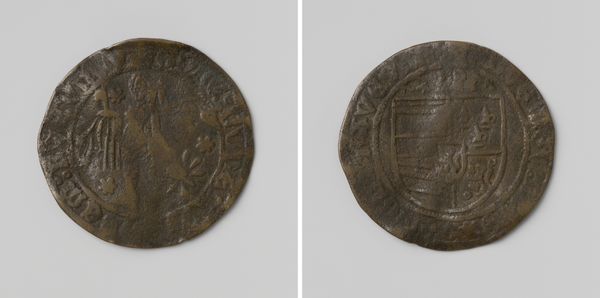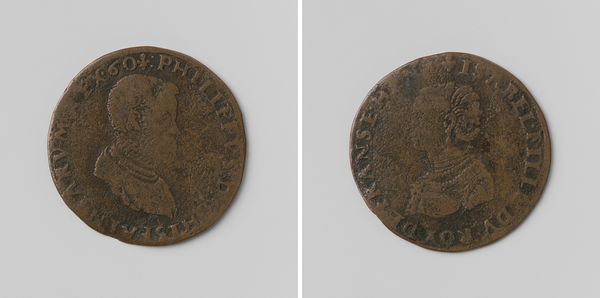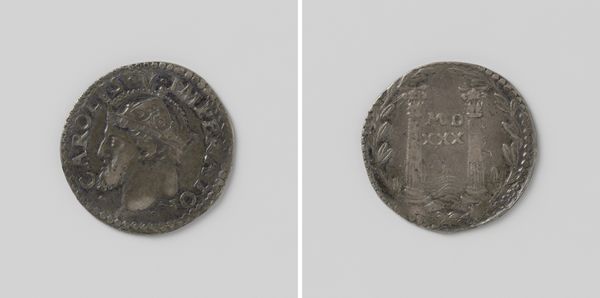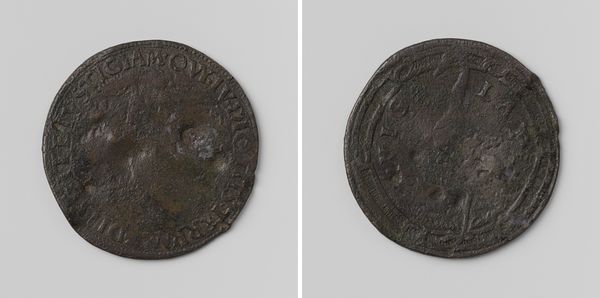
Dubbele stuiver, noodmunt uit Doornik door de bondgenoten ingenomen, geslagen op last van maarschalk de Surville, vervaardigd uit afgesleten munt Possibly 1709
0:00
0:00
print, metal, sculpture, engraving
#
medieval
#
baroque
# print
#
metal
#
sculpture
#
sculpture
#
engraving
Dimensions: diameter 2.6 cm, weight 2.25 gr
Copyright: Rijks Museum: Open Domain
Editor: Here we have what is described as a "Dubbele stuiver, noodmunt uit Doornik door de bondgenoten ingenomen, geslagen op last van maarschalk de Surville, vervaardigd uit afgesleten munt", likely from 1709. It's a small, rather battered-looking coin. What strikes me is the re-use of material and the context of war and occupation implicit in its creation. What do you see in this object? Curator: What interests me is that this isn't just currency; it’s a statement of material constraints and political power. It represents a complete rethinking of value – quite literally minted out of crisis. We should be thinking about what pre-existing coins were melted down in its making and who had access to those coins. How does the act of reshaping and restamping change their original context? Editor: So the history isn't just about the siege of Doornik, but also about the earlier life of the materials themselves? Does the reuse elevate what would normally be considered basic raw materials into something new? Curator: Precisely. Consider the labour involved. The quick recasting of old currency underscores an urgent need for money in a city under siege, bypassing normal processes and potentially utilizing local artisans whose skills were then harnessed by the occupying forces. Do you think its crude craftsmanship diminishes its significance, or perhaps amplifies it? Editor: I initially thought the battered quality made it seem less important. But you're right, it emphasizes the immediate, pressing need that drove its creation, and, further, highlights a certain level of resourcefulness born from conflict. Curator: Absolutely, and that raw functionality connects it to a whole network of material practices tied to warfare and economic survival. It moves beyond simple aesthetics. Editor: I now view this coin, with its crude form and its recycling of base metal, as a raw piece of history illustrating the resourcefulness driven by necessity under extreme circumstances. Curator: Yes, exactly. And how objects are re-worked during conflict, and the meaning produced out of it.
Comments
No comments
Be the first to comment and join the conversation on the ultimate creative platform.
